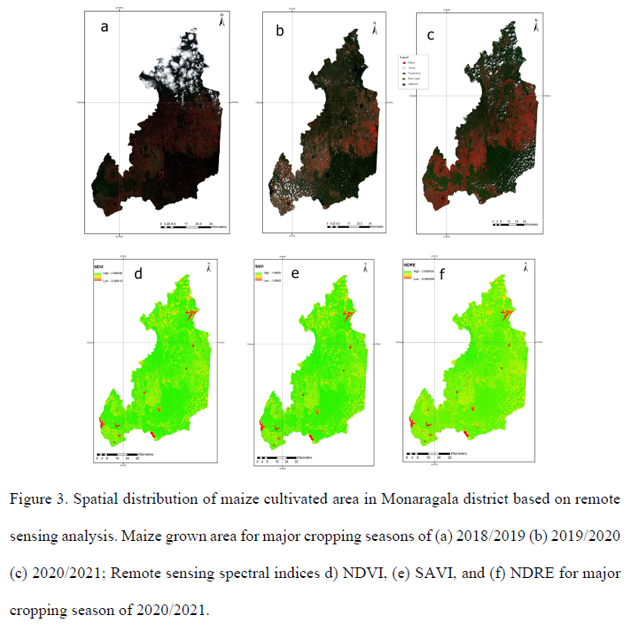|
Maize is the second most important crop of Sri Lanka, and the annual maize production on the island is around 380,000 MT, whereas direct human consumption is estimated at over 50,000 MT. Fall armyworm (Spodoptera frugiperda) is a destructive pest for maize crop in Sri Lanka. Remote sensing is the acquisition of information about the earth's surface by measuring its reflected and emitted radiation at a distance. Based on the fact that crop canopies absorb and reflect incident radiation, healthy and stressed plants have different absorbance/reflectance characteristics that can be measured quantitatively and hence can be identified crop conditions. The present study revealed the wavelengths along with the optimum vegetation index, NDRE is the best to sense the severity of the fall armyworm damage.
|
 |
|
|
Aruni Upeksha Dias Abeygunawardhana, Ransilu Chaminda Watawala, Primali Weerasinghe, Wasana de Silva Agrociencia |
||
Abstract:- https://colopos.mx/colopos/journals/published/1689615276_YQKlg.pdf
|
||

- 011 2903539 / 539
- officerc@kln.ac.lk
- Mon - Fri 8:00 - 17:00
Quick Links
Contact us
Research council
University of Kelaniya, Kelaniya 11600,
Sri Lanka
+094 (112) 903 539
officerc@kln.ac.lk
Latest News
Test
